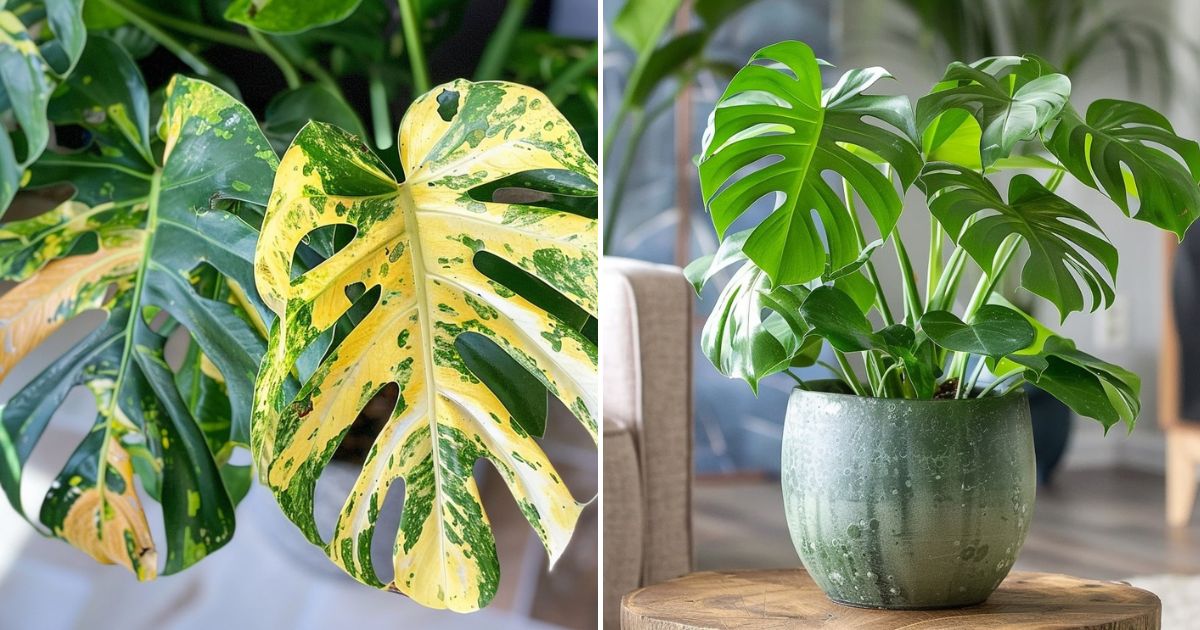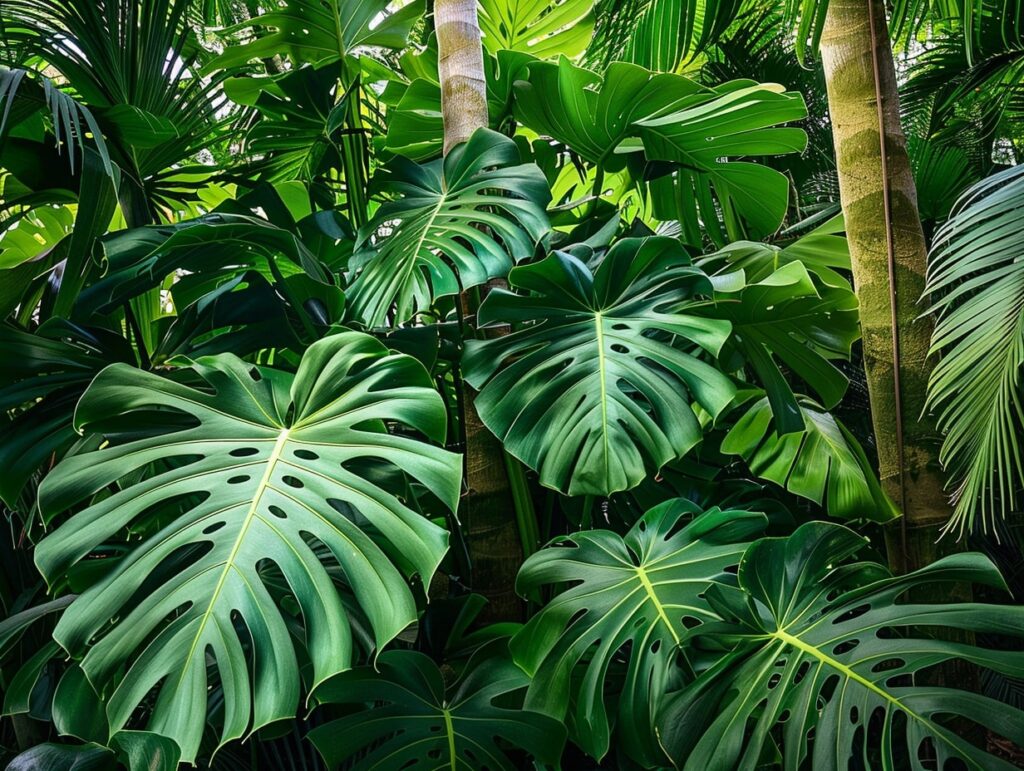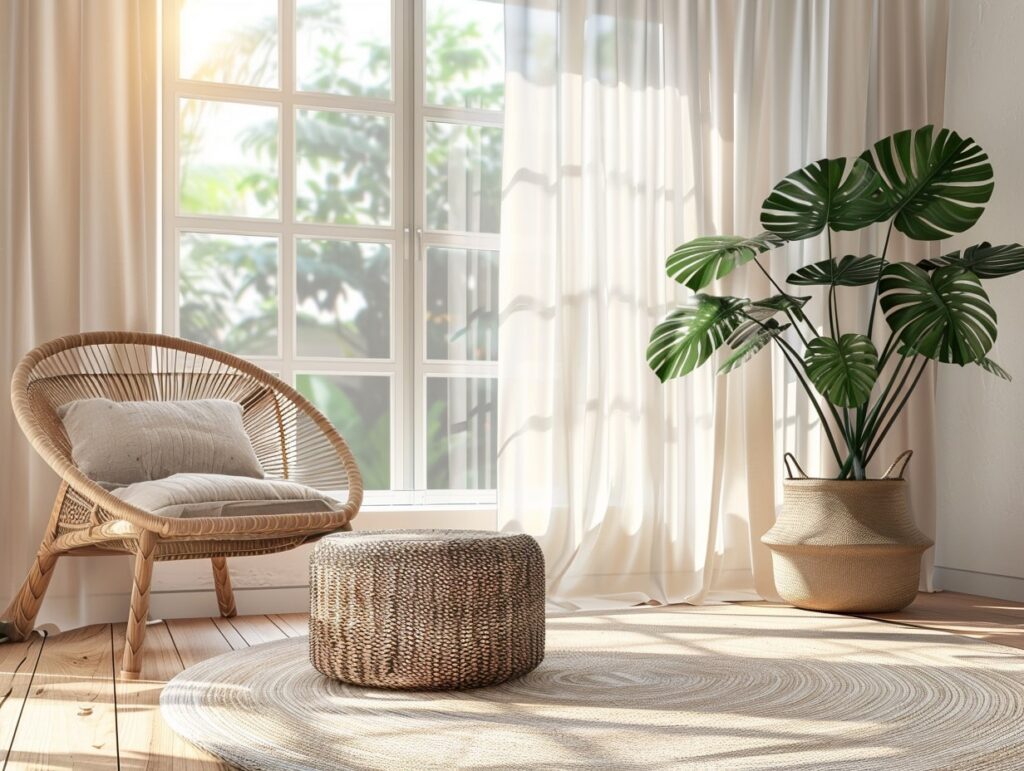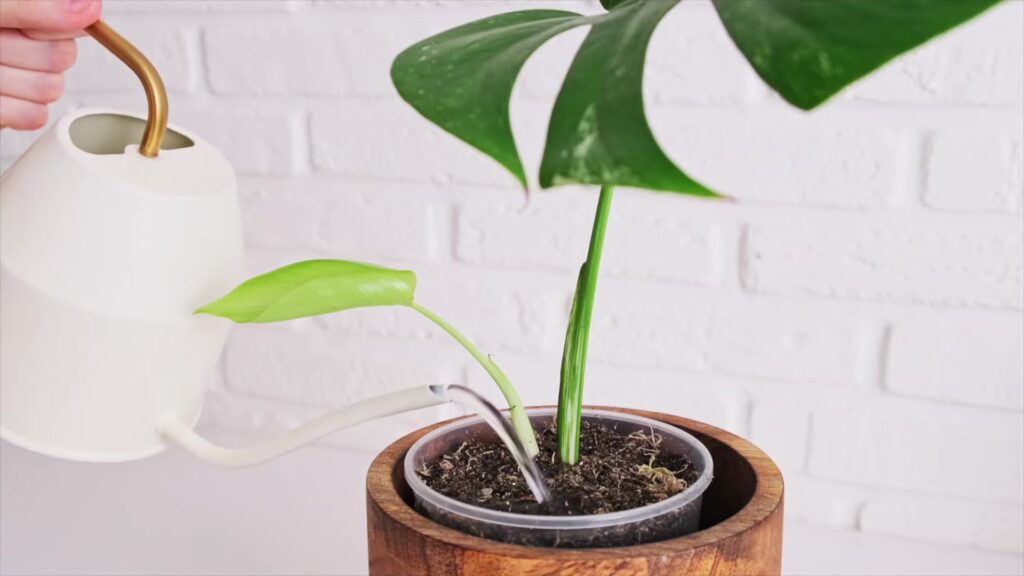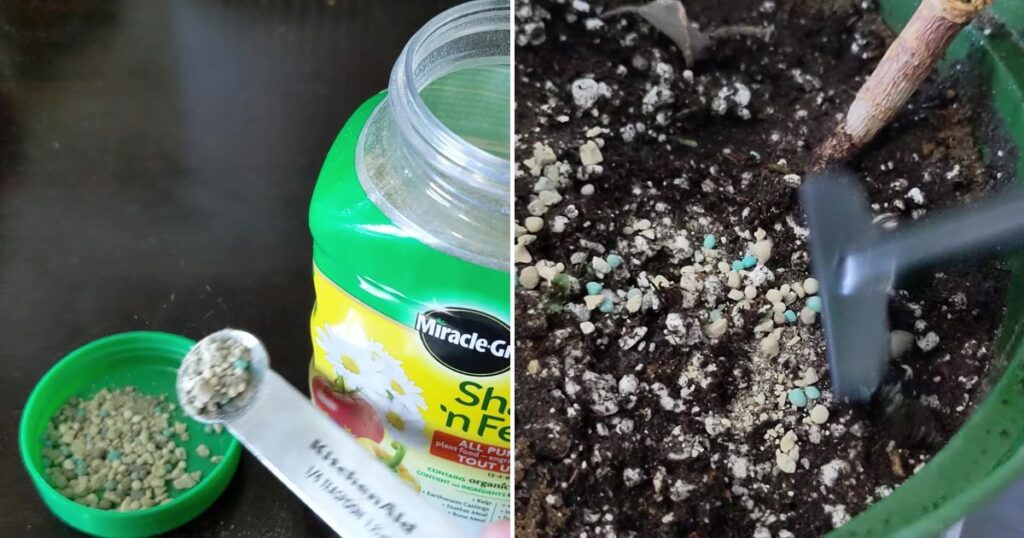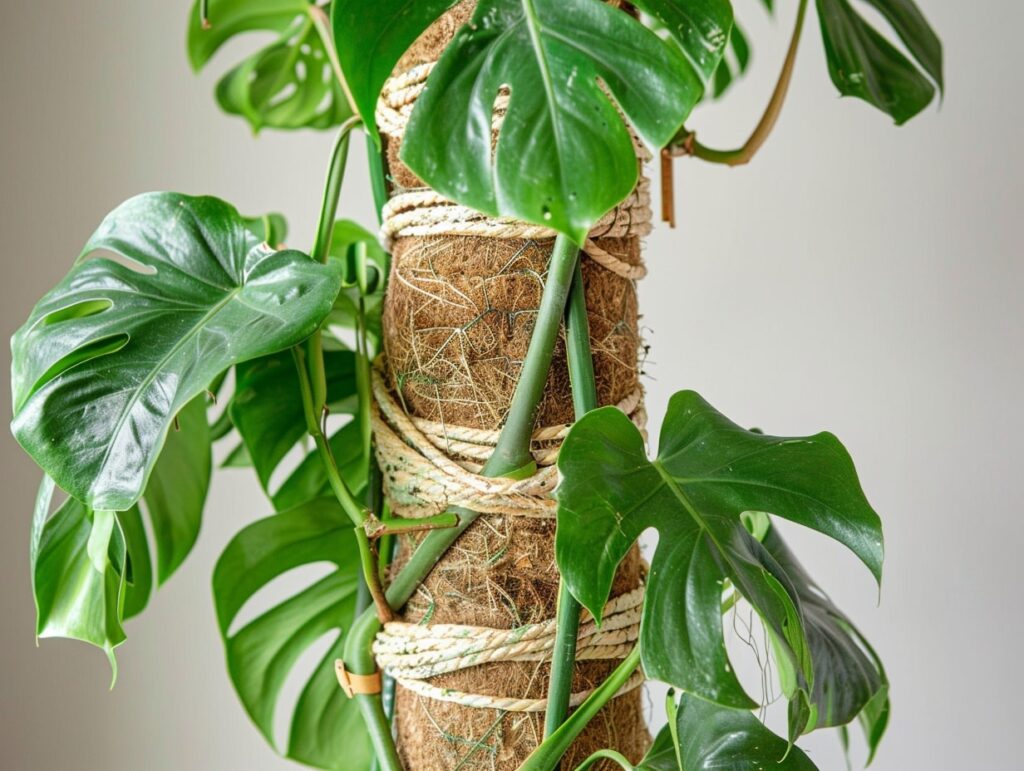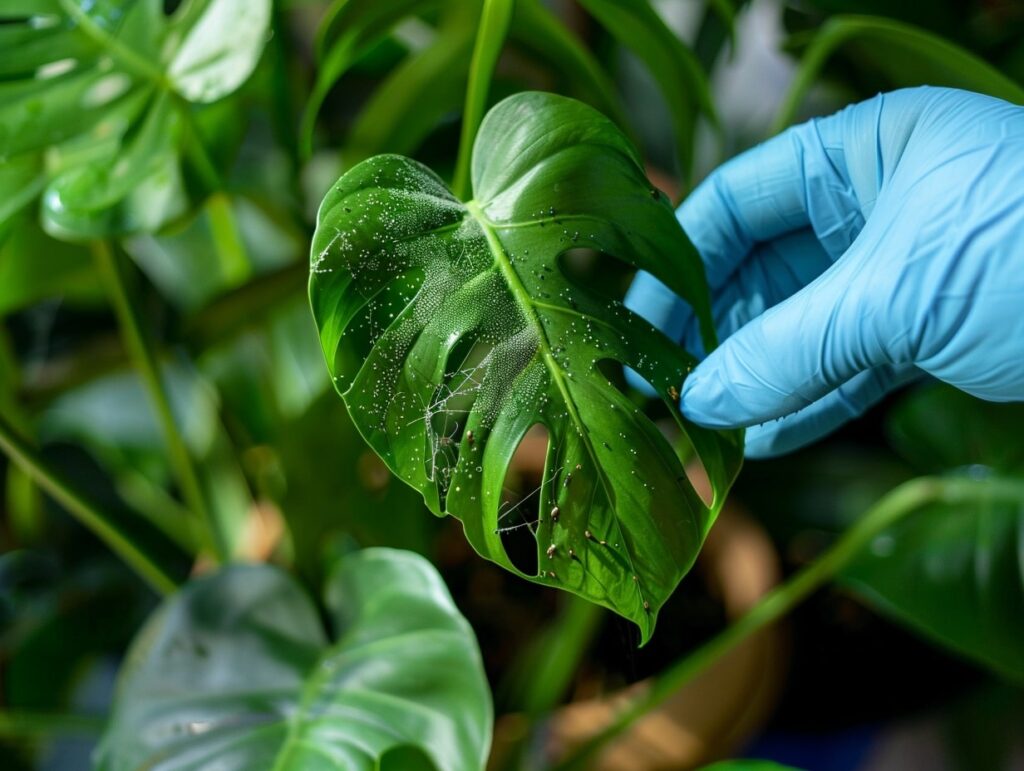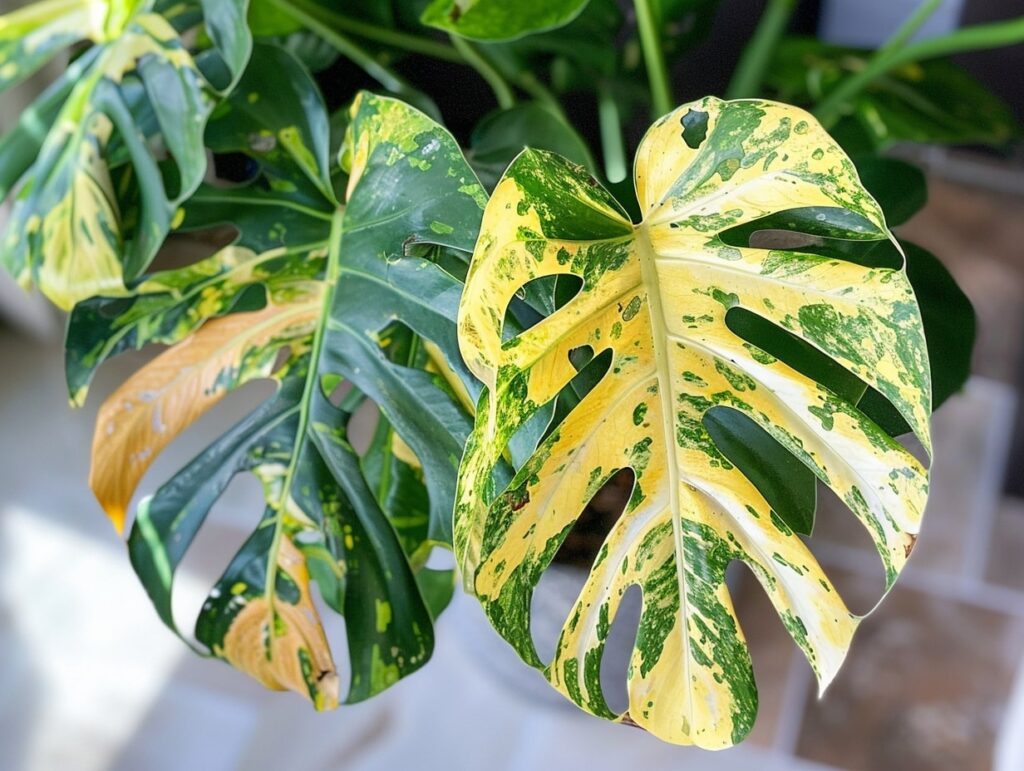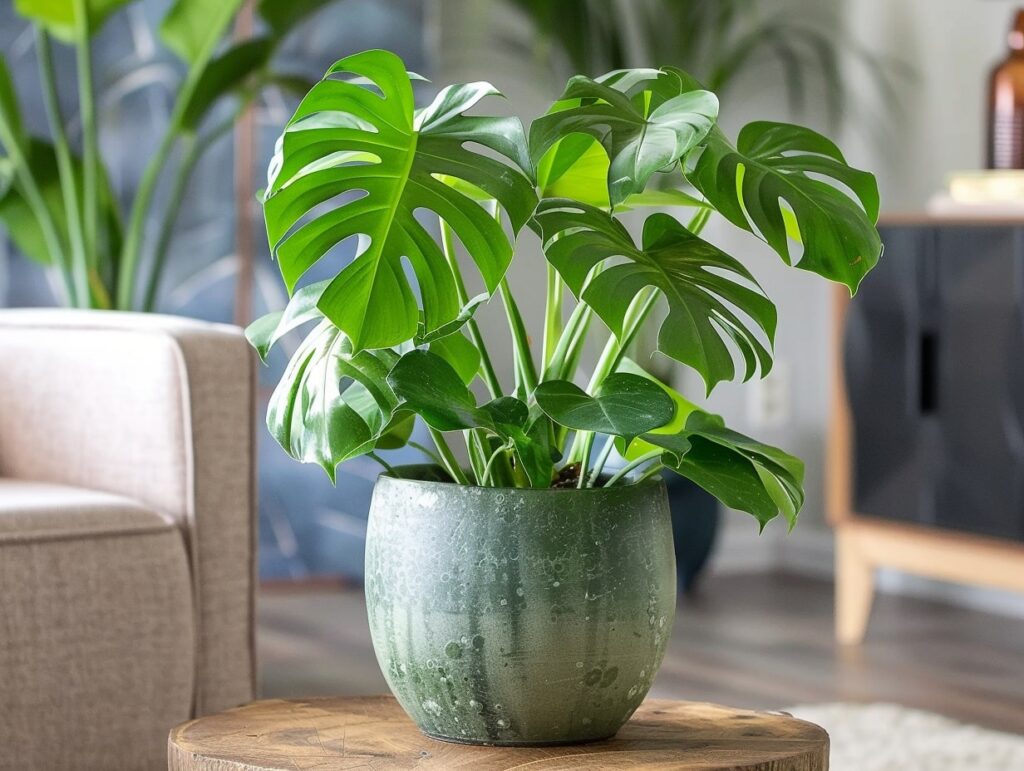Ready to turn your home into a lush, green oasis? The Monstera plant, with its iconic, split leaves, is a showstopper that can transform any space.
To keep your Monstera thriving, you need to provide it with bright, indirect light and water it when the top inch of soil feels dry. These simple steps will ensure that your Monstera remains healthy and vibrant.
Monstera plants are not just beautiful but also relatively easy to care for. Make sure to place your plant in a location where it can receive plenty of indirect sunlight, as direct sun can scorch its lovely leaves.
Regularly dusting the leaves helps the plant breathe and grow better.
Don’t forget about humidity and proper drainage. Monsteras love humidity, so occasional misting can go a long way. Ensure your pot has drainage holes to prevent root rot by allowing excess water to escape.
Getting to Know Your Monstera
Monstera plants, native to tropical forests, are well-loved for their unique leaf patterns and easy care requirements. Learn about their origin, characteristics, and the different types you might encounter.
The Origin and Characteristics
Monstera plants originate from the tropical rainforests of Central and South America. They are known for their large, glossy leaves with natural splits and holes, which help them to withstand heavy rainfall and catch sunlight.
You may notice thick, aerial roots on your Monstera. These roots help anchor the plant to trees and absorb moisture from the air. Monstera plants can climb using these roots, making them perfect for trellises or moss poles in your home.
Light is essential for your Monstera to thrive. It prefers bright, indirect light but can tolerate some shade. Direct sunlight, however, can scorch the leaves. Water moderately, allowing the soil to dry between watering to prevent root rot.
Varieties of Monstera
There are several popular varieties of Monstera. The Monstera deliciosa is the most common, recognized by its large, fenestrated leaves and robust growth. It’s also known as the Swiss Cheese Plant.
The Monstera adansonii, or Swiss Cheese Vine, has smaller, more perforated leaves and tends to vine more than the deliciosa. It’s ideal for hanging baskets or climbing structures.
You might also encounter the Monstera obliqua, which is rarer with much thinner leaves and more dramatic holes. This variety is delicate and needs high humidity to thrive.
Each variety of Monstera brings its unique charm and requires slightly different care, so it’s essential to know which type you have to provide the best environment.
Essentials of Monstera Plant Care
To keep your Monstera plant thriving, it’s important to provide optimal light, water, soil, temperature, and humidity conditions. Each aspect is vital to ensure the plant’s health and growth.
Sunlight and Placement
Monstera plants prefer bright, indirect sunlight. Too much direct sun can scorch the leaves, while too little light can slow growth. Ideally, place your Monstera near an east or west-facing window with filtered light. If natural light is limited, consider using a grow light.
Maintain a consistent light source to avoid stress on your plant. Rotate the Monstera occasionally to ensure even growth. Avoid placing it in drafty areas or near air conditioning vents, as sudden temperature changes can harm the plant.
Watering Requirements
Water your Monstera when the top inch of soil feels dry to the touch. Overwatering can lead to root rot, so ensure the pot has good drainage. Use room-temperature water and avoid letting the plant sit in water.
During the growth season (spring and summer), you might need to water more frequently. In fall and winter, reduce watering as the plant’s growth slows. Always monitor the soil moisture to keep your Monstera’s roots healthy.
Soil and Repotting
Monstera plants thrive in well-draining soil rich in organic matter. A mix of peat, perlite, and potting soil is ideal. This blend provides essential nutrients and prevents waterlogging.
Repot your Monstera every 1-2 years or when it outgrows its current pot. Choose a container that’s 2-3 inches larger in diameter than the previous one. Repotting gives the roots more space to grow and access fresh nutrients.
Temperature and Humidity Needs
Monstera plants prefer temperatures between 65-85°F (18-29°C). They are sensitive to cold drafts and should be kept away from windows during winter. Maintaining a stable temperature helps the plant thrive.
High humidity levels, around 60%, are favorable for Monstera plants. If your home is dry, especially in winter, consider using a humidifier or placing the plant on a humidity tray.
Regular misting can also help maintain the needed moisture to keep your Monstera healthy and happy.
Growth and Maintenance Tips
When you buy a Monstera in a large pot, it’s often triple-planted or has a climbing pole awkwardly placed in the middle. This setup leads to the plant growing wide and wild, which might not be the look you’re aiming for.
Large Monsteras from big box stores often have multiple stems growing in different directions, making it challenging to train them for upward growth.
Caring for your Monstera involves regular pruning, proper fertilization, and providing adequate support. These practices ensure the plant stays healthy and displays its iconic, split leaves beautifully.
Pruning and Cleaning
Regular pruning helps manage your Monstera’s size and encourages new growth. Use clean, sharp scissors to trim dead or yellowing leaves. Removing these leaves redirects the plant’s energy to healthier parts.
Wipe the leaves with a damp cloth to remove dust. This not only keeps the plant looking fresh but also improves photosynthesis by allowing more light to penetrate the leaves.
Inspect for pests and clean the leaves or treat them as needed. Pruning also gives you a chance to check for any signs of disease or infestation.
Fertilizing for Healthy Growth
Use a balanced, water-soluble fertilizer every four to six weeks during the growing season (spring and summer). A 20-20-20 fertilizer diluted to half strength works well.
Avoid over-fertilizing, as it can burn the roots and cause leaf discoloration. If you notice this, flush the soil with water to remove excess nutrients.
During the dormant season (fall and winter), reduce fertilizing frequency to every two to three months. This slower period requires less nutrition but benefits from occasional feeding.
Support and Trellising
Monstera plants can grow tall and sprawling. Providing support like a moss pole or trellis is essential for vertical growth. Insert the support near the base and gently tie the stems with soft ties.
As the plant climbs, its aerial roots will attach to the support. This mimics its natural habitat and strengthens the plant. Adjust ties and supports as needed to accommodate growth.
For wider growth, prune top sections to encourage side shoots. This keeps the plant balanced and prevents it from becoming top-heavy.
Troubleshooting Common Issues
Encountering problems with your Monstera? No worries! Use these tips to address and prevent common issues related to pests, diseases, and leaf problems.
Pest Prevention and Control
Pests like spider mites, scale, and mealybugs can attack Monstera plants. Inspect your plant regularly for signs of these pests, such as tiny webs or sticky residue.
To prevent infestations, keep your plant healthy by providing proper light, water, and humidity. Quarantine new plants before introducing them to your collection.
If pests are present, treat the plant with insecticidal soap or neem oil. Spray thoroughly, covering both the tops and undersides of leaves. Repeat treatment weekly until pests are gone.
Dealing With Diseases
Fungal and bacterial infections can affect your Monstera. Signs include yellowing leaves, brown spots, or wilting. Ensure proper drainage and avoid overwatering to prevent root rot.
Improve air circulation around your plant by spacing it away from other plants. If an infection occurs, remove affected parts immediately and sterilize your pruning tools.
Treat with a fungicide or antibacterial spray if necessary. Ensure the plant receives adequate light and avoid wetting the leaves to help prevent disease recurrence.
Fixing Foliage Problems
Yellowing, browning, or wilting leaves often signal environmental stress. Check for proper light exposure—Monsteras need bright, indirect light. Incorrect watering is another common cause; water when the top inch of soil is dry.
If leaves have holes or splits naturally, don’t worry—this is typical for the species. Brown leaf tips could indicate low humidity. Use a humidifier or mist your plant to increase moisture levels.
Ensuring balanced fertilization can also address nutrient deficiencies. Avoid using too much fertilizer, as this can burn the roots and damage the leaves.
Turning your home into a lush, green oasis is a rewarding journey, especially with the stunning Monstera plant. By providing the right light, water, humidity, and care, your Monstera will thrive and bring a touch of the tropics to your space.
Remember, every Monstera has unique needs, so understanding your specific variety can make all the difference. With these tips, you’ll enjoy the beauty and benefits of a healthy, vibrant Monstera for years to come.
